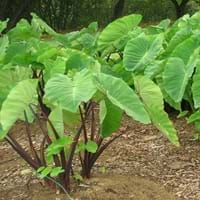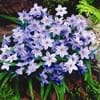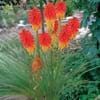Life Span
Annual
Perennial
Type
Tender Perennial
Herbs
Origin
Southeastern Asia
Europe, Asia
Types
Eddoe taro, Dasheen taro
Not Available
Number of Varieties
Not Available
Habitat
agricultural areas, Hillside, Warm and moist climatic conditions
Dry areas, Roadsides, stream banks, Stream side, Waste areas
USDA Hardiness Zone
10-11
3-7
Sunset Zone
H1, H2, 22, 23, 24
1a, 1b, 2a, 2b, 3a, 3b, 4, 5, 6, 7, 8, 9, 10, 11, 12, 13, 14, 15, 16, 17, 18, 19, 20, 21, 22, 23, 24
Habit
Clump-Forming
Clump-Forming
Flower Color
White, Green
White, Lavender
Flower Color Modifier
Not Available
Bicolor
Fruit Color
Red
Sandy Brown
Leaf Color in Spring
Dark Green, Ivory
Gray Green, Gray
Leaf Color in Summer
Dark Green, Ivory
Gray Green, Gray
Leaf Color in Fall
Dark Green, Ivory
Gray Green, Gray
Leaf Color in Winter
Dark Green, Ivory
Light Green
Leaf Shape
V-Shaped
Arrowhead
Plant Season
Spring, Summer, Fall, Winter
Spring, Summer, Fall
Sunlight
Partial shade, Full Shade
Full Sun, Partial Sun
Type of Soil
Loam, Sand
Clay, Loam, Sand
The pH of Soil
Acidic, Neutral
Acidic, Neutral, Alkaline
Soil Drainage
Well drained
Well drained
Bloom Time
Indeterminate
Summer, Late Summer, Early Fall
Tolerances
Heat Tolerance, Humidity, Salt and Soil Compaction, Shallow soil
Drought, Dry soil
Where to Plant?
Container
Container, Ground
How to Plant?
From Rhizomes
Seedlings
Plant Maintenance
Medium
Low
Watering Requirements
Needs 2-3 times watering per week, Needs a lot of water initially
Do Not over Water, Never Over-water, Requires regular watering, Water when soil is dry
In Summer
Lots of watering
Lots of watering
In Spring
Moderate
Moderate
In Winter
Average Water
Average Water
Soil pH
Acidic, Neutral
Acidic, Neutral, Alkaline
Soil Type
Loam, Sand
Clay, Loam, Sand
Soil Drainage Capacity
Well drained
Well drained
Sun Exposure
Partial shade, Full Shade
Full Sun, Partial Sun
Pruning
No pruning needed
Prune if you want to improve plant shape, Prune in spring, Remove damaged leaves, Remove dead leaves
Fertilizers
All-Purpose Liquid Fertilizer, Less fertilizing
fertilize every 2-3 weeks while growing, fertilize in growing season
Pests and Diseases
Aphids, Rats, Snails
Caterpillars, Leaf Hoppers, Nematodes, Spider mites
Plant Tolerance
Heat Tolerance, Salt and Soil Compaction, Shade areas
Drought, Frost
Flowers
Insignificant
Showy
Flower Petal Number
Not Available
Single
Fragrant Bark/Stem
No
Yes
Foliage Texture
Bold
Medium
Foliage Sheen
Glossy
Matte
Attracts
Aphids, Bugs, Not Available, Snails
Flying insects, Insects, Spider Mites
Allergy
Swelling in mouth, Throat itching
Avoid during Pregnancy, Headache, Stomach pain, Vomiting
Aesthetic Uses
Showy Purposes
Beautification, Landscape Designing, Showy Purposes
Beauty Benefits
Poison Ivy, Skin cleanser, Weightloss
Not Available
Environmental Uses
No fertilizer, pesticides, or herbicides needed, Prevent weeds
Air purification
Medicinal Uses
Aging, Laxative, Weight loss
Arthritis, Cold, constipation, Fever, Insomia, Migraines, Upset stomach
Part of Plant Used
Leaf Stalks, Leaves
Whole plant
Other Uses
Used As Food, Used as Ornamental plant
Air freshner, Decoration Purposes, Employed in herbal medicine, Making Perfumes, Making Shampoo, Making Sweet Scented Oil, Medicinal oil, Used as Ornamental plant, Used for its medicinal properties
Used As Indoor Plant
No
Yes
Used As Outdoor Plant
Yes
Yes
Garden Design
Container, Feature Plant, Groundcover, Houseplant, Mixed Border, Tropical
Container, Herb / Vegetable, Mixed Border
Botanical Name
ALOCASIA micholitziana
NEPETA cataria
Common Name
Elephant Ear, Taro
Cat Nip, Catnip
In German
Colocasia (Pflanzengattung)
Katzenminze
In French
Colocasia
cataire
In Spanish
Colocasia
Catnip
In Greek
Colocasia
Είδος δυόσμου
In Portuguese
Colocasia
catnip
In Polish
Kolokazja
Kocimiętka
In Latin
Colocasia
catnip
Phylum
Magnoliophyta
Magnoliophyta
Class
Liliopsida
Magnoliopsida
Clade
Angiosperms, Monocots
Angiosperms, Asterids, Eudicots
Tribe
Colocasiodeae
Mentheae
Subfamily
Aroideae
Nepetoideae
Season and Care of Taro and Catnip
Season and care of Taro and Catnip is important to know. While considering everything about Taro and Catnip Care, growing season is an essential factor. Taro season is Spring, Summer, Fall and Winter and Catnip season is Spring, Summer, Fall and Winter. The type of soil for Taro is Loam, Sand and for Catnip is Clay, Loam, Sand while the PH of soil for Taro is Acidic, Neutral and for Catnip is Acidic, Neutral, Alkaline.
Taro and Catnip Physical Information
Taro and Catnip physical information is very important for comparison. Taro height is 30.00 cm and width 30.00 cm whereas Catnip height is 980.00 cm and width 60.00 cm. The color specification of Taro and Catnip are as follows:
Taro flower color: White and Green
Taro leaf color: Dark Green and Ivory
Catnip flower color: White and Lavender
- Catnip leaf color: Gray Green and Gray
Care of Taro and Catnip
Care of Taro and Catnip include pruning, fertilizers, watering etc. Taro pruning is done No pruning needed and Catnip pruning is done Prune if you want to improve plant shape, Prune in spring, Remove damaged leaves and Remove dead leaves. In summer Taro needs Lots of watering and in winter, it needs Average Water. Whereas, in summer Catnip needs Lots of watering and in winter, it needs Average Water.





